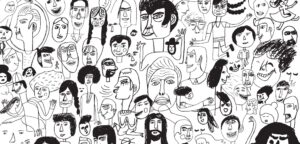
Creating Terrific Readers through Terrible Drawings
Could doodles, sketches, and stick figures help to keep the college reading apocalypse at bay?

Could doodles, sketches, and stick figures help to keep the college reading apocalypse at bay?

Teachers focus on developing students’ conscious learning and understanding of concepts, but there is a whole other dimension of mental life that teachers also influence: implicit thought and memory. Psychologists distinguish between explicit and implicit mental processes.[1] We are consciously aware of explicit processes, as

The strategies students use to engage with and learn material are crucial in any course. The course may be well organized and delivered brilliantly, but instructors can’t control how students interact with the material outside of class. For years, scientists (and a shout-out to

There are more than 2,000 islands along the coast of Maine, 200 of which are in the Penobscot Bay. My island, one of the few that is publicly connected to the mainland, is a 20-minute ferry ride shore to shore. We also have a

Most academic courses require learners to do some amount of reading to provide background in core concepts, to demonstrate applications and use cases, and to elaborate intriguing new applications and directions—or maybe just to navigate the various prompts and guidelines. But reading is a skill,

One major advantage of online learning is that an instructor can use the power of the internet for course content. Instead of having to create each lesson as a lecture in a face-to-face class, they can direct students to the exceptional content that already exists

Memory is a bread-and-butter topic in my academic field of cognitive psychology—something that we’ve been systematically researching for over a half century now and where important discoveries continue to happen. As many of my disciplinary colleagues have pointed out, memory theory is also an incredibly

Developed in the corporate training sector, microlearning is drawing attention from higher education as an alternative to traditional courses. As the name suggestions, microlearning involves short lessons on a relatively narrow topic, while traditional courses cover a range of topics within a general subject.

If you were to compare the average college class with the average elementary school class, one thing you would immediately notice is that college students almost never move around after they have sat down, whereas elementary classes often involve hands-on activities that require movement. There

If you have studied a foreign language, you know that you start forgetting what you learn soon after you stop using it. But this phenomenon is not restricted only to foreign languages. In the 1880s, German psychologist Hermann Ebbinghaus identified a “forgetting curve” when he

Magna Publications © 2025 All rights reserved